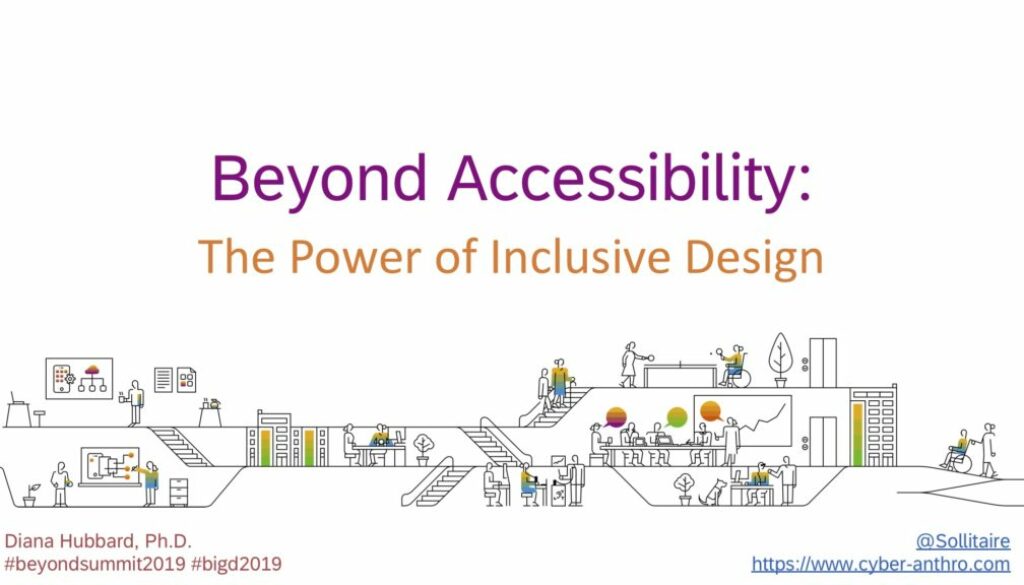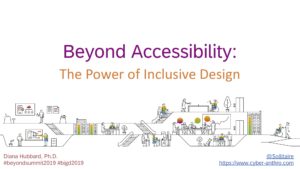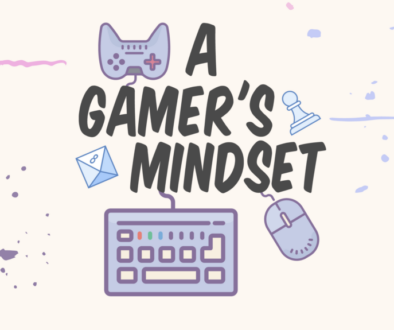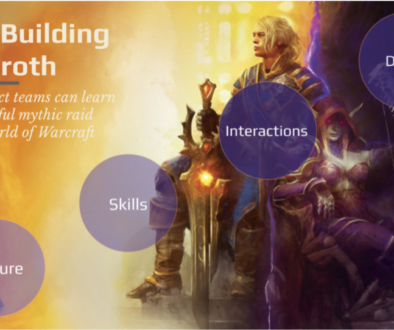Beyond Accessibility: The Power of Inclusive Design
Better late than never right? I suppose a furlough is a perfect opportunity to catch up on posting some of my presentations here. To that end, I’ll start with the latest I gave twice in the fall of last year. Thank you to all who came and for those who didn’t, I’m happy to share the slide deck. Unfortunately it is very large due to the videos I have within it, so I am not able to post it to any slide share sites and you may have to download it to view it. I’ve captured what I feel are the most important points below for those who simply want the highlight reel.
This is a presentation I gave twice last year on inclusive design. Why did I choose this topic? Well, it’s become quite the buzzword that people often use without truly understanding what it is. The most common notion I’ve seen is that it is simply designing something with accessibility in mind. Unfortunately, that just gets to the end result and doesn’t necessarily do it well.
The simple condensed message of this presentation is that inclusive design is about the process of design. It is about INCLUDING people from diverse backgrounds as well as those with diverse abilities in the designing activities and not just as a potential user for which the product or service is designed.
A few of key points:
- Innovation starts with people and there is no better place to look for ways to innovate than to consider people who are differently abled
- People often start from a problem solving mindset and solutionizing right from the beginning when they would be better off if they went problem finding first. When you think you already know the problem and already have a way to solve it, you end up with tunnel vision which does nothing but exclude all of the other possibilities where you could truly innovate.
- The best way to describe inclusion is that it is the opposite of exclusion.
- Go problem finding with people who are used to finding problems (hint: those who are differently abled or come from traditionally marginalized backgrounds)
- Being differently abled can be permanent, temporary, or situational – if you design for it, you help EVERYONE.
- Our most precious resource is attention and it is very hard to PAY that when you already start with a smaller amount of it due to attention divestors including but not limited to differing experiences with:
- Mobility
- Hearing
- Sight
- Touch & Fine Motor
- Speech
- Langauge
- Cognition
- Finances
- Economics
- Emotions
- Environment
- Attention Investors include but are not limited to:
- Accessibility: Attribute, Goal, Result
- Inclusivity: Mindset, Method, Approach
- Universal Design: Attribute – making something usable with no adaptations
- Open Design: Process, Method, Approach
- Everything comes back to starting with PEOPLE
- Key take aways
- It’s a mindset not an attribute
- It’s not just about the what, but also the who and the how
- Going problem finding is essential to better understand problem solving
- You can start right now
- Start right now by:
- Thinking creatively – as Papanek said, try designing for “the poor, the sick, the elderly, [&] the disabled.” (Design for the Real World, 1984)
- Working in interdisciplinary teams (include designers, engineers, product owners, researchers, and the people for whom you’re creating the product or service)
- Looking beyond your particular product or service (the problem you’ve found has likely been approached by others in unique ways you can learn from if you simply look beyond your own market)
- Learn from the current environment (ecological, social, economic, and political)
- Integrate your designs (how does this product or service fit within the user’s entire experience, not just what your particular focus does but what the user needs it to do along with everything else they have going on in their lives)
- Review your designs after release (both quantitatively and qualitatively – watch people actually use it in the field in real situations, you’d be amazed at what you will learn)
Lastly, and this is very important to me – there are some people in the world who suggest Designers with a big D (those who hold that title) should be Gatekeepers to keep out bad design that is proposed by designers with a little d (everyone else in the world as we are ALL designers).
I suggest that it is our job, instead, to be Gardeners (thank you to Jorge Arango). It is up to us to help cultivate all design ideas into ones that will grow and evolve into something great for everyone and to keep tending to them as design is never a one and done event. In the end we should be open to new ideas, even if we didn’t come up with them ourselves. Let’s mix our new inclusivity mindset with a growth mindset. Designers do not corner the market on good ideas, rather, we are good at bringing them to life.
Though we may not be able to change the world for everyone, we can always change it for someone — especially when we include them in as a major player in seeing that change through.
End Note: If you can download and view the deck, I highly recommend it. It has great examples, and videos, and firsthand accounts. I may separate it all out as its own portfolio piece at a later date for easier review. I’ll post an update here if I do.
Update: Here is the portfolio so you can view all of the slides without downloading the presentation. Of note, there are videos in the full presentation that are only located there. I feel they are very powerful and add a lot to it. Links to all but one of the videos are provided in the slide descriptions if you want to try to view them that way.
P.S. I used a lot of Papanek quotes throughout this presentation. If you haven’t read Design for the Real World, I highly recommend it. It’s over 30 years old and thus some of it may be read in a harsh light given today’s enlightened view on many things, however, it is still relevant.
Other books I reference are Ruined by Design, Mismatch, and Living in Information.



